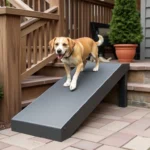
Traveling with pets can be one of the most joyful experiences for dog owners. Whether it’s a quick trip to the groomer or a long weekend getaway, many owners find immense pleasure in their dog’s company on the road. Do dogs like riding in cars? This question resonates with many pet parents, as understanding their furry companions’ preferences is crucial for providing a happy and safe travel experience.
In this discussion, we’ll explore various aspects of dogs and car rides, including their natural instincts, the benefits of traveling together, common reasons some dogs may dislike car rides, and tips for ensuring a positive experience. By the end, you’ll have a clearer insight into how to make car rides enjoyable for your dog.
Understanding Dogs’ Behavior
Natural Instincts
Dogs are inherently pack animals, and their instinctive behavior drives them to seek companionship and adventure. When you take your dog for a ride, they often view it as an opportunity to be part of the pack, experiencing the world alongside their human. The excitement of new sights, sounds, and smells can be incredibly stimulating for them. A car ride can evoke their natural curiosity and desire for exploration, making it an appealing activity for many dogs.
Individual Differences
While some dogs might relish every moment spent in a vehicle, others may prefer to stay home. Factors influencing a dog’s preference for car rides include breed, temperament, and past experiences. For example, a Labrador Retriever, known for their friendly and adventurous spirit, might be more inclined to enjoy car rides than a more reserved breed. Additionally, dogs that have had prior positive experiences with traveling are likely to associate car rides with fun and adventure.
Benefits of Riding in Cars for Dogs
Mental Stimulation
Car rides can offer a wealth of new stimuli for dogs. As they look out the window, they encounter a variety of sights and smells that can enhance their mental engagement. The journey itself can be an adventure, providing them with fresh experiences that keep their minds sharp and active.
Bonding Experience
Traveling together can significantly strengthen the bond between you and your dog. The shared experiences of car rides create lasting memories and deepen your relationship. Whether it’s a trip to the dog park or a scenic drive, the time spent together fosters trust and companionship.
Opportunities for Adventure
Car rides can open the door to new adventures, such as visits to dog-friendly parks, beaches, or hiking trails. These outings provide your dog with the chance to explore different environments and interact with other dogs, enriching their socialization and overall quality of life.
Common Reasons Dogs May Dislike Car Rides
Motion Sickness
Just like humans, some dogs may experience motion sickness during car rides. This can lead to discomfort, nausea, and even vomiting, making the experience unpleasant for both the dog and the owner. If your dog shows signs of distress during rides, motion sickness could be a factor.
Anxiety and Fear
Certain sounds or experiences associated with car travel can trigger anxiety in dogs. The noise of the engine, the sensation of speed, or even a negative past experience can contribute to a dog’s reluctance to ride in the car. Dogs that are naturally anxious or fearful may struggle more with the idea of traveling in a vehicle.
Lack of Training
For many dogs, especially those that are not accustomed to car rides, unfamiliarity can lead to stress. Without proper training or gradual introductions to the car environment, dogs may not know what to expect, resulting in anxiety and discomfort.
Preparing Your Dog for Car Rides
Gradual Introductions
To help your dog acclimate to car rides, start with gradual introductions. Begin by allowing your dog to explore the car while it is parked. Let them sniff around, sit inside, and get comfortable in the space. Once they seem relaxed, you can take short drives around the block to build their confidence.
Creating a Comfortable Space
Making the car environment inviting is crucial for your dog’s comfort. Consider using blankets, favorite toys, or a comfortable dog bed. A familiar and cozy space can help your dog feel secure during the ride. Additionally, using a pet seat cover can protect your car’s interior while providing a soft spot for your dog to rest.
Safety Measures
Safety should always be a priority. Use a dog seat belt, crate, or barrier to keep your dog secure during the ride. This not only protects your dog in case of sudden stops but also prevents distractions while driving. Safety harnesses designed for dogs are widely available and can make car rides much safer for your furry friend.
Tips for a Positive Car Riding Experience
Take Breaks
For longer trips, it’s essential to take regular breaks. Stopping every couple of hours allows your dog to stretch, relieve itself, and get some fresh air. These breaks can help alleviate any restlessness and keep your dog comfortable throughout the journey.
Use Calming Aids
If your dog tends to get anxious during car rides, consider using calming aids. Soft music can create a soothing atmosphere, while pheromone sprays or anxiety wraps may help reduce stress. Experiment with different methods to see what works best for your dog.
Hydration and Snacks
Keeping your dog hydrated is key, especially during long trips. Always have fresh water available and consider packing some dog-friendly snacks. Be cautious of feeding your dog a large meal right before a car ride, as this can exacerbate motion sickness.
Signs Your Dog Enjoys or Dislikes Car Rides
Positive Indicators
When a dog enjoys car rides, their body language will often reflect their happiness. Signs of enjoyment may include wagging tails, relaxed posture, and excited barking. If your dog eagerly jumps into the car and settles in comfortably, it’s a good indication that they love the experience.
Negative Indicators
Conversely, if your dog shows signs of distress, it may indicate that they dislike car rides. Look for behaviors like excessive whining, panting, drooling, or trying to escape. If your dog displays these signs, it’s essential to reassess their experience and make adjustments to ensure their comfort.
Alternatives for Dogs That Don’t Like Cars
Other Modes of Transportation
If your dog truly dislikes car rides, there are alternative modes of transportation to consider. Trains, buses, or pet-friendly taxis may provide a more comfortable option for your dog. Research local transportation options that accommodate pets and allow for a stress-free travel experience.
Staying Home
In some cases, it may be best to leave your dog at home or with a trusted sitter during travel. If your dog struggles with anxiety or motion sickness, staying in a familiar environment can help reduce stress. Ensure they have plenty of toys and comfort items to keep them occupied while you’re away.
Conclusion
Understanding whether dogs like riding in cars involves recognizing their natural instincts and individual preferences. While many dogs relish the opportunity for new experiences and bonding time with their owners, others may struggle with anxiety or motion sickness. By preparing your dog for car rides, providing a comfortable environment, and being attentive to their needs, you can create a positive experience for both you and your furry friend. Observing your dog’s behavior during rides will help you tailor future journeys to ensure they are enjoyable for all.









